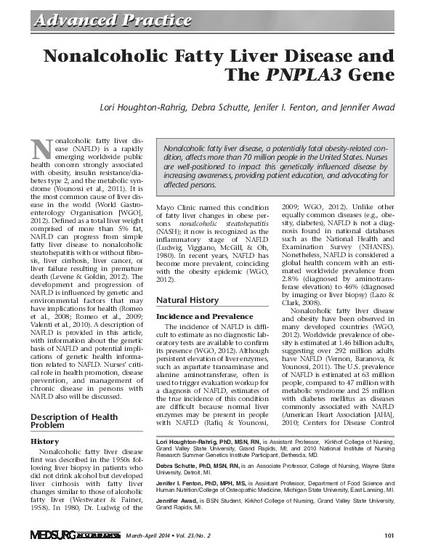
- nonalcoholic fatty liver disease,
- fatty liver disease,
- PNPLA3,
- PNPLA3 gene
Nonalcoholic fatty liver disease (NAFLD) is a rapidly emerging worldwide public health concern strongly associated with obesity, insulin resistance/diabetes type 2, and the metabolic syndrome (Younossi et al., 2011). It is the most common cause of liver disease in the world (World Gastro - enterology Organisation [WGO], 2012). Defined as a total liver weight comprised of more than 5% fat, NAFLD can progress from simple fatty liver disease to nonalcoholic steatohepatitis with or without fibrosis, liver cirrhosis, liver cancer, or liver failure resulting in premature death (Levene & Goldin, 2012). The development and progression of NAFLD is influenced by genetic and environmental factors that may have implications for health (Romeo et al., 2008; Romeo et al., 2009; Valenti et al., 2010). A description of NAFLD is provided in this article, with information about the genetic basis of NAFLD and potential implications of genetic health information related to NAFLD. Nurses’ critical role in health promotion, disease prevention, and management of chronic disease in persons with NAFLD also will be discussed.
Houghton-Rahrig, L., Schutte, D., Fenton, J. I., & Awad, J. (2014). Nonalcoholic Fatty Liver Disease and The PNPLA3 Gene. MEDSURG Nursing, 23(2), 101–121.
Available at: http://works.bepress.com/lori-houghton-rahrig/3/
